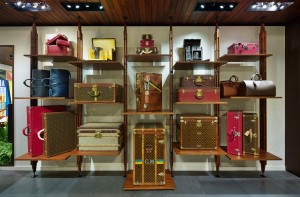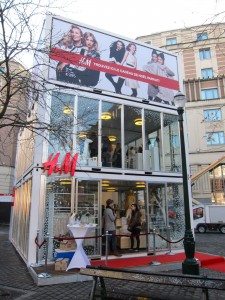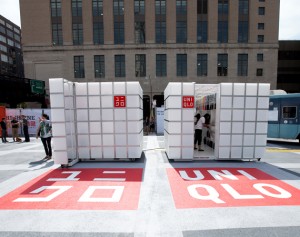In 1997 Patrick Courrielche, a creative and political pundit, devised what was later called a one-day “ultimate hipster mall.” This is notable for two reasons. First, it was one of the first examples of what we know now as a pop-up retail. Second, I was unaware that the term “hipster” existed in 1997. My research shows it was coined in the 1990’s but did not become uber popular until the 2010’s. Did you notice that I fit “uber” into that sentence. Did you also notice that I am wildly off topic because this is supposed to be about pop-up retail?
Courrielche’s event was actually called The Ritual Expo. It was the catalyst for companies that liked the idea of creating short-term experiences to promote their brands to specific audiences. It prompted AT&T, Levi-Strauss, and Motorola to work with Courrielche on pop-up shopping experiences.
This form of retail goes back before 1997. Circuses, ice cream trucks, farmer’s markets, hot dog stands, and even the old bookmobile rate as pop-ups. For decades, Halloween shops have  popped up prior to October 31st every year. Even the seasonal Christmas tree sellers meet the definition of a pop-up retailer. One could argue that many of the 5th Avenue flagship stores in New York are longstanding pop-up shops. That is because few make money from those locations and maintain the investment for awareness only.
popped up prior to October 31st every year. Even the seasonal Christmas tree sellers meet the definition of a pop-up retailer. One could argue that many of the 5th Avenue flagship stores in New York are longstanding pop-up shops. That is because few make money from those locations and maintain the investment for awareness only.
The format has multiple benefits for the brand. It allows an interesting connection with existing customers while making a splashy introduction to new ones. Awareness tends to be the biggest benefit and not only for the foot traffic who happen by. Pop-ups are notorious for gaining traditional media and social media attention. As a whole, the investment is relatively reasonable. The square footage costs and promotion are upwards of 80% cheaper than a traditional retail store.
Pop-ups are also mini-labs of product development, customer service, and brand positioning.  They are active test centers. The format is ideal for launching new products, engaging new consumers and entering new territories. The Lion’esque Group specializes in pop-up retail. Their research shows that the average pop-up sees a 35% increase in sales from doors open to 6 months after doors close. As well, 50% off these pop-ups see an average increase of 30% on social media engagement over the lifespan of the pop-up shop. So they can pay off in multiple ways.
They are active test centers. The format is ideal for launching new products, engaging new consumers and entering new territories. The Lion’esque Group specializes in pop-up retail. Their research shows that the average pop-up sees a 35% increase in sales from doors open to 6 months after doors close. As well, 50% off these pop-ups see an average increase of 30% on social media engagement over the lifespan of the pop-up shop. So they can pay off in multiple ways.
However, like any retail and marketing innovation there can be failure. Location, timing, weather, positioning, authenticity, value, uniqueness and other factors all come into play when conceptualizing and delivering a pop-up experience. Success is determined by pursuing fewer goals. I have witnessed Lululemon’s pop-up at the yoga festival, Wanderlust. Sales are not a goal. It exists to help spread the gospel of yoga through henna tattoos, music DJs, and comfortable seating to hang out and discuss downward dogs (by the way, I have never done yoga, the festival is held in near my home).
Creativity is key to pop-ups. Once upon a time, Ebay invited six interior designers to furnish an entire New York City penthouse. The designers were given a limited budget and could only use 
All this proves is pop-ups have longevity. And they are attractive to a wide variety of brands. Pond’s Cold Cream, Havaianas, Kate Spade, Dockers, Crown Royal, Gucci, HP, Method, Louis Vuitton, Meow Mix, and Hermes have all “popped-up”. UGG, H&M, and Uniqlo are popping up at the moment and Warby Parker will soon be joining with Nordstrom’s on a unique pop-up installation within select stores.
Statistics on pop-ups are a little thin but a new report out of the UK from EE and the CEBR 
For all of the hype and news around online retailing, we still make 93% of our purchases in physical stores. Pop-ups are an interesting linking strategy between those locations and what happens online. For that reason and the others covered, they are definitely here to stay. What will be fascinating is how they evolve. I think they will mirror what has happened in advertising. That is less disruptive ads and more and more native ads. So my bet is they will move from being disruptive “pops!” and instead will be more seamlessly embedded into our society.